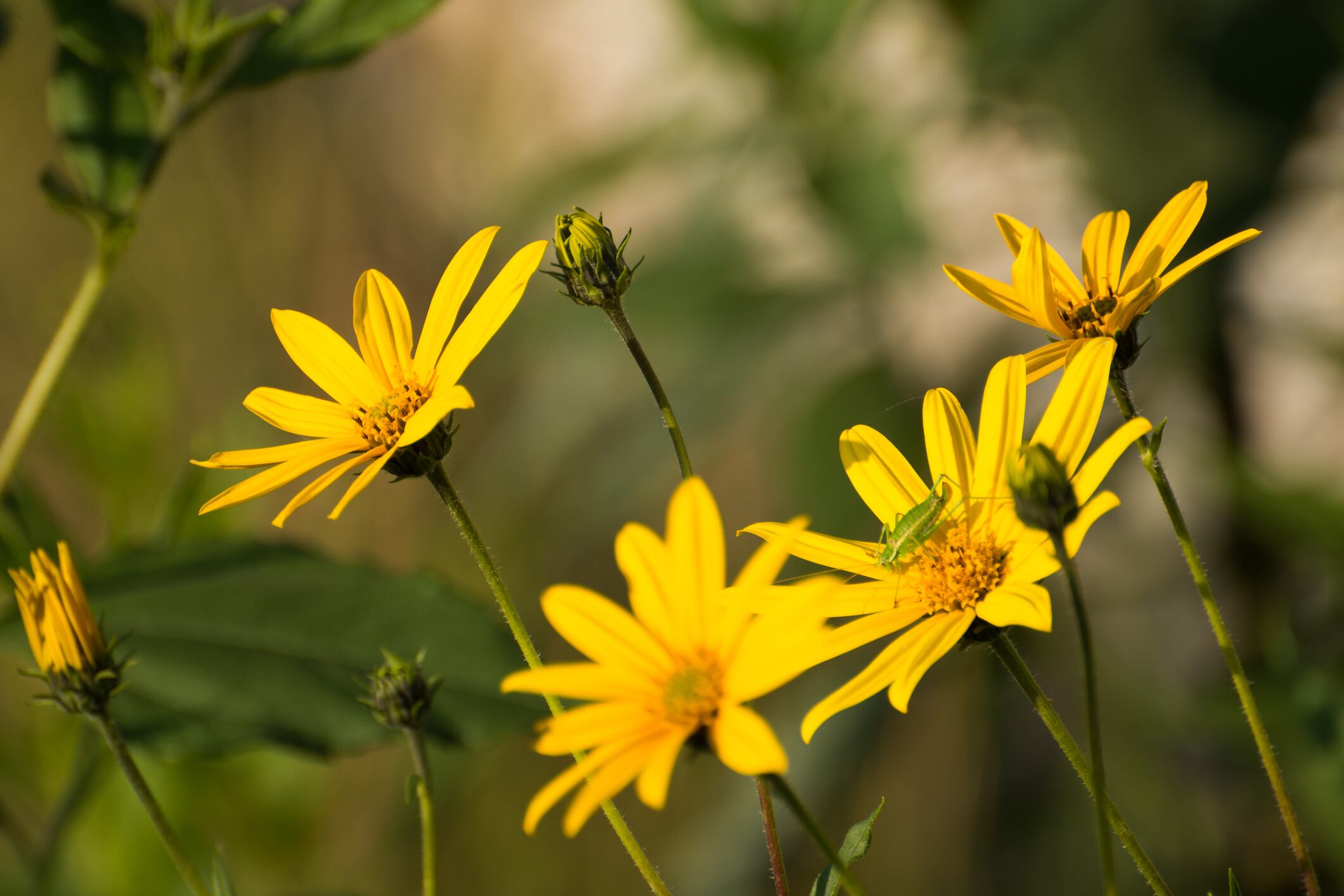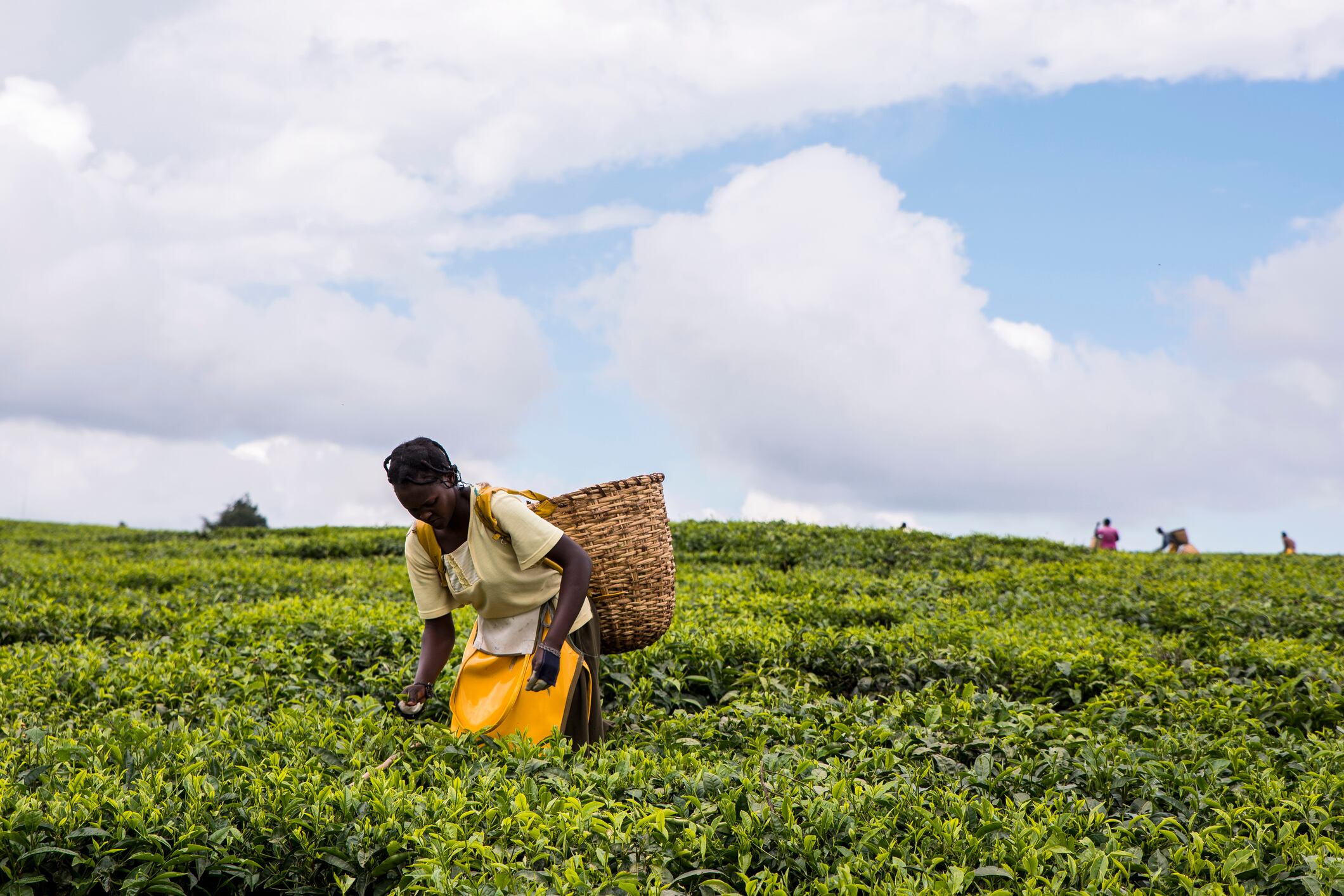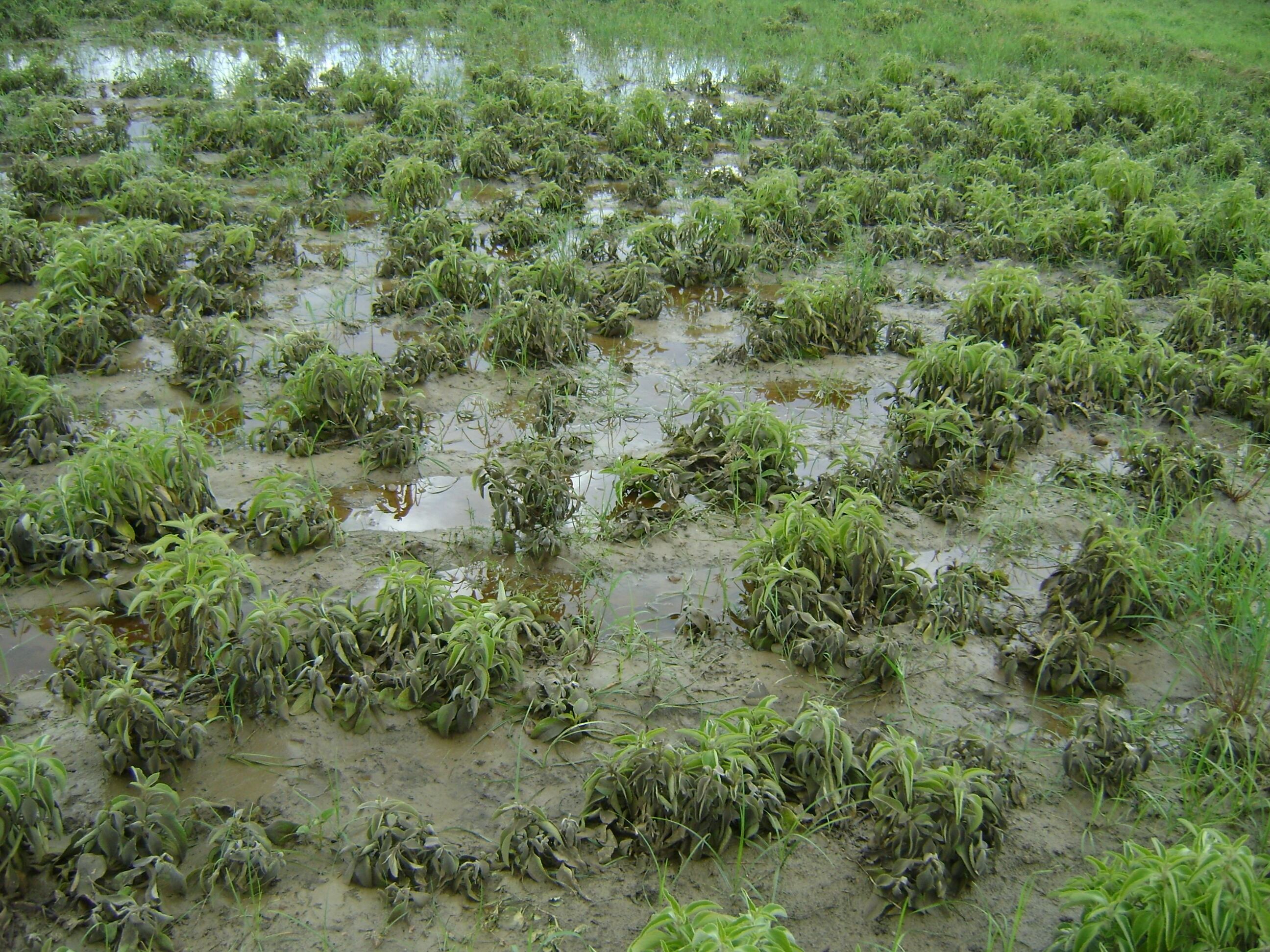In 2008, Josef Brinckmann was starting to establish a new production base for schisandra (Schisandra sphenanthera or nanwuweizi in Traditional Chinese Medicine) for Traditional Medicinals. According to village elders, the harvest time for the berries had been from mid-September to early October “since forever”. But over the last 10 years, the flowering and fruiting periods have been radically different every year.
The changes to the schisandra harvest is just one example, Brinckmann said, but it illustrates the general point that the predictability of when you can harvest things is all over the place.
“I make field visits at harvest time, and when harvest will happen has become increasingly difficult to predict,” he said. “There are events happening that are impacting when things fruit and flower, when harvest will happen or if they’ll happen at all.
“This is happening everywhere I go. I think if you talk to any farmer anywhere in the world—and it doesn’t have to be medicinal plants, it can be food crops, you’re going to hear similar stories.
“And it’s not just the unpredictability of the weather, it’s the scale and frequency of large weather events that can cause total crop failure. People will tell you, ‘this is a 500-year flood… but we had another one two years ago.’”
‘Plants cannot scurry up a mountainside’
One of the first, if not the first article to explore the impact of climate change on medicinal and aromatic plants was published in HerbalGram in 2009 (Issue: 81, pages: 44-57). The extensive article explored many aspects of climate change, including the impact on specific ecosystems, such as Arctic and alpine regions.
“Alpine plants are in danger because as their niche environment becomes a few degrees warmer, the plants are not able to scurry up the mountainside to reach the lower temperatures that they are accustomed to,” said Mark Blumenthal, executive director of the American Botanical Council and the editor/publisher of HerbalGram. “Plants are not mobile. The snow lotus (Saussurea laniceps) from Tibet is an example of this.”
Another Himalayan plant that is affected is Picrorhiza karroa (Kutki), which grows at an altitude of 3,500 to 4,800 meters above sea level, said Shaheen Majeed, worldwide president at Sabinsa.
“These areas have a specific climatic niche where these plants thrive well,” he explained. “Now due to the shift in climatic conditions, mainly the rise in temperature, the growth of other plants, predominantly weeds, has increased in this area. These weeds naturally overtake the growth of Kutki plants thereby destroying the natural habitat of these plants.”
Sourcing challenges
“From a company perspective, we’ve had more challenges sourcing material in the last five years than we’ve had in the previous 30,” noted David Winston, RH (AHG), founder of Herbalist & Alchemist. “We’ve had droughts, floods and issues with early frosts, late frosts. With these erratic patterns, it creates significant issues with many plants.”
Climate change affects the soil, Winston explained. It affects the fungi growth in the soil (and all plants can have some kind of mycorrhizal association), and the increased heat and moisture increase the risk of many plant diseases.

After drought significantly impacted the saw palmetto harvest in 2007, for example, the next 10 years saw more and more rain during the flowering and fruiting period, said Steven Foster, herbalist, author, photographer and a member of ABC’s Board of Trustees. This has affected the harvest because the moist conditions promote the growth of a specific fungus that causes the fruit to drop prematurely and not mature, he noted.
Climate change also impacts insect populations, with some detrimental bugs expanding their range or booming in numbers.
Some people are responding by increasing the use of herbicides, fungicides and pesticides. This then increases the risk of material coming into the marketplace with greater chemical load.
An example of that is a Chinese herb called Tienqi ginseng (Panax notoginseng), said Beth Lambert, CEO of Herbalist & Alchemist.
“We used to make products with Tienqi ginseng because it’s an amazing herb, but we stopped using it because we kept testing and found there was nothing in the marketplace that would meet our specs both for pesticides and herbicides,” she explained. “That was because in those particular years there had been a lot of rain in China, and you couldn’t get anything that wasn’t treated with a fungal inhibitive.
“We ended up having David [Winston] reformulate. We had another issue with Chinese coptis (Coptis chinensis or huanglian in Traditional Chinese Medicine), which is a berberine-containing plant, and we had to reformulate with goldenseal, which is a lot more expensive.”

The canary in the coalmine
Climate change is also impacting the phytochemical composition of plants. Some stress is important for most plants because the secondary metabolites are basically triggered by stress. For example, if you grow catnip in really good soil, you’ll get really large plants, but the quality of the catnip is not very good. Catnip grown in poor soil gives you a smaller plant but the level of monoterpenes—the essential oil compounds—is much higher.
“When it comes to climate change, if the plant is really stressed out—meaning long periods with no rain—and assuming you can keep the plant alive at all, then the quality and the chemistry of the plant is going to change dramatically,” explained Herbalist & Alchemist’s Winston.

A 2014 article in HerbalGram (Issue: 103, pages: 44-51) explored the impact of climate change on the taste of tea in China.
“People are noticing a change in taste, which is presumably based in changes in the actual phytochemistry, which could be an indicator of nutritional profile and pharmacological activity,” said ABC’s Blumenthal. “Tea is maybe the canary in the coalmine. If it’s affecting tea it may be affecting the phytochemistry of other plants.”
Another example is a plant called Yellow Dock (Rumex crispus), which is traditionally harvested during the dryness of the late summer.
“You want to gather this where it has been dry for preferably five to seven days because the level of constituents in the root are much higher,” Winston said. “On the other hand, last summer we had a really wet August, and the roots contained a lot more water and a lot less of the active constituents. Instead of the root being bright yellow, it was pale yellow.”
“The days are over where a company can say, ‘our preferred farmer is in x village’”
The “erosion of predictability” and increasing uncertainty is changing how companies source material and do business.
“It’s always been wise to spread risk in your supply chain, and in the last 10 years we’ve had to actively implement our spreading risk policy of having two, if not three or four production bases that are in distinct agro-climatic and geopolitical zones,” said Traditional Medicinals’ Brinckmann. “Coupling those two together is important because the other thing we’ve seen in the last decade is more civil unrest and revolutions and the disruption in trade because of this.”

Chamomile is a good example here. The plant grows wild around the Czech Republic, Slovakia, Hungary and Poland. It’s also cultivated there, and the farming extends into Germany and down to Croatia and across the Mediterranean to Italy, Greece and Egypt.
Egypt is an important chamomile country for Traditional Medicinals, but supply has been impacted by both climatic and geopolitical events.
“The year before the Arab Spring, there was a big problem with Egyptian chamomile because during the flowering period it snowed,” Brinckmann said. “People said, ‘it’s never ever snowed here before’. It stunted the growth of the flowers, and it changed the chemical composition so the quality and quantity of the essential oil was different. The yields were lower, and then the next year they had a revolution.”
“Our company has been in business for 44 years,” he added. “We realized decades ago that the way for us to have batch-to-batch uniformity, and to prove that scientifically, is to have good relationships with the production bases so that you’re selecting the harvests that mostly match the previous year. There is no way a company can do that if they’re price-buying off the open market and have no relationships with producers.
“We believe that a foundation of reproducible efficacy is reproducible quality. If people are saying that they get a benefit from this and they can rely on this product for this intended use, then you have an obligation as a company to make them the same way every time.”
“Climate change is making that more and more complicated. We have to work harder and harder with our partners to expand our production bases and still meet our quality requirements to get our ingredients from at least two different agro-climate and geopolitical zones. It’s not easy, but that’s what we’re doing,” he added.
Diversification
Herbalist and Alchemist prefers to use U.S.-sourced plant material if possible, but the company is having to expand its sourcing and now contracts batches from multiple growers. In case one crop fails, the company can always get a little more from another area.
“We’re finding we have to do more and more of that,” Lambert said. “We cannot be dependent on one farmer or gatherer for what we need.”

“It does increase your costs to have to do more small batches,” she added.
“These co-operative groups that are coming together make a lot of sense, like the Vermont Herb Growers Co-op. We’ve bought from some of those farmers individually, but it makes so much sense that they’re diversified within a local geographic area to help each other, supply in volume and keep a customer base. We think that’s a really great model for farmers regionally."
The local impact
Of the roughly 3,000 herbs in global commerce, the majority of botanical species—greater than 2,000—are wild and not farmed, according to Brinckmann.
“In rural communities you generally don’t do one thing year round for your household income, and being able to predict village and household economics has a lot to do with the predictability in nature and knowing that you have the labor available at a particular time,” he said.
When Brinckmann first started exploring potential new production bases for schisandra berries, the key questions he’d ask of the local community were: When do you traditionally harvest, and what else is going on at that time? What are the competing economic activities? Before we can discuss scaling up, can you do more sustainably?
“If you have to bring labor in, then it’s no good, but if you can do it with the labor resources in the village, then you can improve the household income,” he said.
This potential shortage of labor in rural areas is having a profound impact on botanical raw material prices. In the past decade, survival in the remote rural areas looks harder to young people, and they are moving to cities.
For Brinckmann, who travels all over the world for his job, uncertainty around harvests means planning becomes more challenging. He normally plans his harvest field trips in December for the following year and is buying plane tickets in December and January, but it’s March, and he still doesn’t have his itinerary for the autumn and winter.
“I know I have to go to four countries, but I’m waiting to hear back about harvests, and I’m going to have keep juggling things until maybe June before I start making flight arrangements,” he said. “If I get lucky, I’ll be able to do what I need to do during harvest time.”

View from the fields
“We’re facing the biggest environmental challenge our generation has ever seen,” said Shaheen Majeed, worldwide president, Sabinsa. “No matter what we’re passionate about, something we care about will be affected by climate change.”
Below are certain examples, which, in Sabinsa’s experience, are the impacts of climate change on the herbal industry.
Turmeric: The normal planting season for turmeric is during May, said Majeed, with the arrival of the initial rains, but shifting climatic patterns may delay the initial rains, which would push planting back to August. If the summer of the earlier season is also severe, this will also result in less water in the storage systems.
It takes eight months for turmeric to attain full growth. When the plant reaches six months of growth, summer sets in and the plant will start drying, and no further growth happens. Due to the changed climatic conditions full growth of the plants are not achieved, resulting in less yield and also the quantity of the product is also affected, said Majeed.
Coleus: Normally the planting season for Coleus is September to October, when there are intermittent rains. This year (2017-18) there were very heavy rains in the traditional cultivating areas (photo above). This rendered planting impossible during the normal season and planting had to be shifted to November – December, and even to January in some cases. The growth span of this crop is six months and the harvest should have happened in March, but due to the climate shift the crops won’t be ready for harvest until May and June, thus resulting in non-availability of raw material from March to July. And the quality of the crop will be diminished by the altered growing season.
“In the case of the above changes to growing seasons of crops over the years due to the change in climatic conditions, traditional growing areas have become unsuitable for cultivation. Shifting to new areas means new farmers, and new field conditions. This will have an impact on the quantity and quality of raw material produced,” he said.
Bacopa: The best conditions are marshy land with abundant water, said Majeed, but climate shift reduces the availability of water in some areas and these marshy lands are converting slowly into dry lands. “Plants like Bacopa that usually thrive well in the marshy conditions will be slowly replaced with other plants which can thrive better in the changed conditions,” he said.
Excellence in journalism
This article was recognized at the 2019 AZBEE awards from the American Society of Business Publication Editors (ASBPE). The article was awarded bronze in the Web Feature Article category for the Upper Midwest region.


